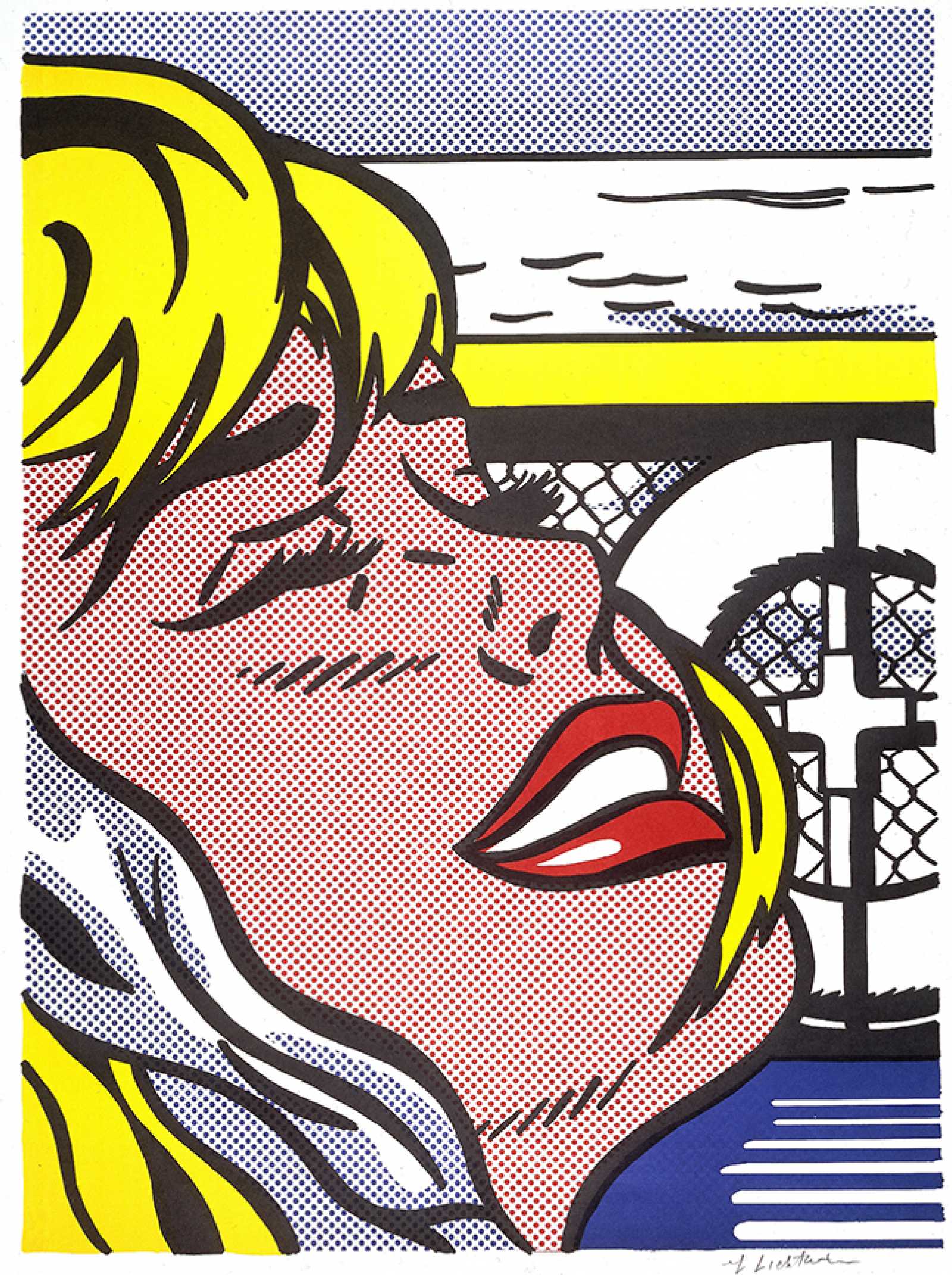Roy Lichtenstein
In the early 1960s Roy Lichtenstein emerged as a leading practitioner of Pop Art with his signature use of comic strip characters and imitations of the conventions of printing techniques. Shipboard Girl is one of his many images of women sourced from newspaper clippings and pulp comic books from the 1950s and 1960s. He deliberately imitated commercial printing processes that utilized the Benday dot, a 19th-century mechanical reproduction technique that allows printers to create what appear to be shades, shadows, and contours by spacing colored dots on the page. Typically the dots are printed in the four colors of printer’s ink (cyan, magenta, yellow, and black) which can be sequenced to produce a range of hues.
Born in New York City, Roy Fox Lichtenstein spent the summer after high school studying painting and drawing at the Art Students League of New York with artist Reginald Marsh. His attendance at Ohio State University was interrupted by service in the U.S. Army during WWII (1943-1945), after which he returned to OSU to complete his BFA. According to the Roy Lichtenstein Foundation, “Lichtenstein’s questioning of accepted canons of taste was encouraged by Hoyt L. Sherman, a teacher whom he maintained was the person who showed him how to see and whose perception-based approach to art shaped his own.”
Roy Lichtenstein (American, 1923-1997), Shipboard Girl, 1965, offset lithograph in four colors on white wove paper, 27 x 20 inches. Promised gift of Donna and Cargill MacMillan, Jr., L2008-43.

